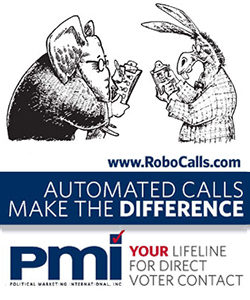Luzi Ann Javier and Marvin G. Perez published an explosive column in Bloomberg.com on September 16 essentially declaring a national emergency because Spangler Candy Company allegedly couldn’t make its Dum Dum Pops and candy canes for a single day.
“U.S. food companies can’t get enough sugar even as the world heads for a fifth straight year of surpluses,” the reporters reported.
Sounded pretty dire. I, for one, sure don’t want to be hanging $20 candy canes on my Christmas tree this year! Thank goodness the Bloomberg report isn’t true.
In fact, buried in the story is the fact that higher prices for, say, Hershey’s chocolate is “driven mostly by cocoa, cocoa butter and milk,” not to mention – though the report does – rising costs for “packaging, fuel, utilities and transportation.” Sugar has little to do with it since there’s only a penny or two worth of sugar in a $1.39 candy bar.
So while the cost of a Snickers may, indeed, go up, it’s not because of an alleged sugar shortage.
Still, the notion of a sugar shortage in the U.S. – knowing there’s a glut of sugar all around the globe – seemed to defy reality. So I did a little checking. And despite claims by Spangler Candy to the contrary, there’s no sugar shortage. In reality, there’s a sugar surplus.
Turns out the reporters were confusing current market information with forecasts of what the market *could* look like in 12 months. According to official market supply figures released by the USDA just last week, there’s enough surplus sugar currently stored at U.S. sugar companies to fulfill 15.2% of the U.S.’s annual consumption. That’s a whole lot of sugar and a healthy surplus by anyone’s definition — even candy companies who say a surplus target of around 14% is adequate.
So if Spangler Candy really ran out of sugar and couldn’t find any, it’s only because they didn’t call any number of companies with surplus sugar to sell – or they weren’t willing to pay the higher spot price rightly charged for last-minute, one-day purchases, which have nothing whatsoever to do with some imagined sugar shortage.
No, it appears Spangler Candy and confectioners — who were coincidentally in Washington, DC, this week lobbying against U.S. sugar policy — saw an opportunity to score some cheap PR points and found a pair of reporters Dum Dum enough to disseminate its propaganda without bothering to get – or at least publish – the other side of the story.
Strangely, that story never addressed an obvious question that any business leader would have. If Spangler Candy is so dependent on a single ingredient that a one-day shortage could cripple its production line and incite panic, then why wouldn’t it have at least a day’s worth of that ingredient stored on site in case of emergency? It’s pretty apparent that Spangler Candy’s little inventory oversight is partially to blame for this made-up crisis, too.
Don’t worry, America. Your Dum Dums are safe!


